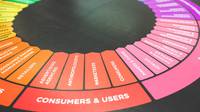
Proper understanding of who your customers are and what they are trying to achieve can make you succeed in serving them. This becomes even more important as the relationship between supplier and customer becomes more and more of partnership, rather than a continuing battle, as stated by G. Randall.
1. Customers' business and where you fit in.
Understanding markets in a broad sense to understanding the people who make them up, the buyers. First we have to look at customers, then in the later part of this article at the consumer.
The term customer is used always to refer to organizations buying goods or services for their own use or for resale. While, consumers are final buyers at retail level, purchasing for their private consumption. The first part of this article therefore deals with what is usually referred to as industrial marketing. As a matter of fact, customers include manufacturers buying raw materials and components, any organizations buying supplies for its own use, a governmental and institutional buyer. A major category not always included within the ambit of industrial marketing is that of retailer, but the relationship between them and their suppliers is exactly like that between many manufacturers and the companies they buy from. In other words, virtually every firm has customers, and need to understand them.
In order to understand and anticipate the needs of your customers, you have to understand fully what is affecting their business. Their markets may be wider or narrower than your own; in some cases you may even have to understand the end-use consumer market which your customer supplies. As a basis, you need to understand the structure of their industry and the forces driving change within it. A good grasp of the Value Chain (Porter) and where you, your competitors and your customers fit within it is necessary. Perhaps most important is to put together the letter two and to anticipate how the industry may change over the next few years, and how you may profit from that or avoid possible threats.
The following are relevant questions to understand your customers better:
1. What is the current competitive position of the firm?
Market share, sales volume and value, profitability and share price are of interest. The views of their customers and of industry experts would be valuable.
2. What is the company strategy?
What are its chosen target markets and segments, what is its overall positioning, how does it try to achieve its objectives in terms of operating policies? A standard SWOT analysis (Strengths, Weaknesses, Opportunities, and Threats) is a useful framework.
3. What is the specific role of the product to which your product contributes within your strategy?
How can your products help the customer achieve the strategic objectives? Is your product essential, or peripheral?
4. Who are the people running the business, in the different departments influencing the buying decision?
What sort of people are they, what are their aspirations, what are they to achieve, what are their problems and difficulties? What is the company culture: relaxed or formal, flexible or policy-bound?
5. Who really makes what decision? Who influences them, who controls the flow of information, how are decisions made, which policies are set in concrete and which can be bent a little?
Except for very routine purchases, it is likely that several people will take an interest in buying decisions, and it is vital to identify them and to understand each, as they will have different.
2. Organizational Buying Behavior
There is a growing body of literature on the subject, in the USA. in Europe, and in Asia. Organizations are constantly changing in response to changes in their environments, and over-generalization is therefore risky. However, there are some patterns of human behavior stay reasonably constant, so we may draw some conclusions. The first thing to do is to dispel certain myths about industrial or organizational buying behavior, such as:
1. Purchasing behavior is economically rational;
2. Technology sells;
3. The right product will sell itself;
4. "We can't waste time on marketing, we don't have the product designed yet";
5. Sales and marketing are the same thing;
6. The myth of technical selling ("We've got the engineers sold, ignore everyone else.")
7. The low bid/low price syndrome (the belief that price is the only consideration in the purchase decision);
8. Bookings and sales are the same thing (ignoring cash flow); and
9. Marketing is marketing - no matter what the product.
All the above-mentioned beliefs are wrong in some way or another and potentially dangerous, according to Penn and Mougel (1978)
Probably the most powerful myth is that industrial buying decisions are rational (as opposed to consumer buying decisions, which are in some way irrational). All the research into how buying decisions are actually made underlines the fact that they are not rational economic decisions, although there are rational components. There are also other components such as emotion, personal goods, or internal politics.
In the classical model of organizational buying behavior, these components or variables are classified as task (directly related to the buying problem) and non-task (extending beyond the buying problem). Applying these to the four main classes of variable-individual, social, organizational, and environmental - produces the scheme shown in the table below, as advance by Western and Wind (1973).
Classification and examples of variables influencing organizational buying decisions
| Variables | Task | Non-Task |
|---|---|---|
| Individual | Desire to obtain lowest price | Personal values and needs |
| Social | Meetings to set specifications | Informal, off-the job interactions |
| Organizational | Policy regarding Local supplier | Methods of personnel evaluation |
| Environmental | Anticipated changes in Price | Political climate in election year |
The other important concepts in the classical model have been summarized in the following terms, according to Webster and Wind:
Organizational buying behavior is a complex process rather than a single, instantaneous act, and involves many persons, multiple goals, and potentially conflicting decision criteria. It often take place over an extended period of time, requires information from many sources, and encompasses many inter-organizational relationships.
The organizational buying process is a form of problem solving, and a buying situation and identify, evaluate, and choose among alternative brands and suppliers. The buying center includes all members of the organization who are involved are those of users, influencer, decider, buyer, and gatekeeper (who control the flow of information into the buying center)

















